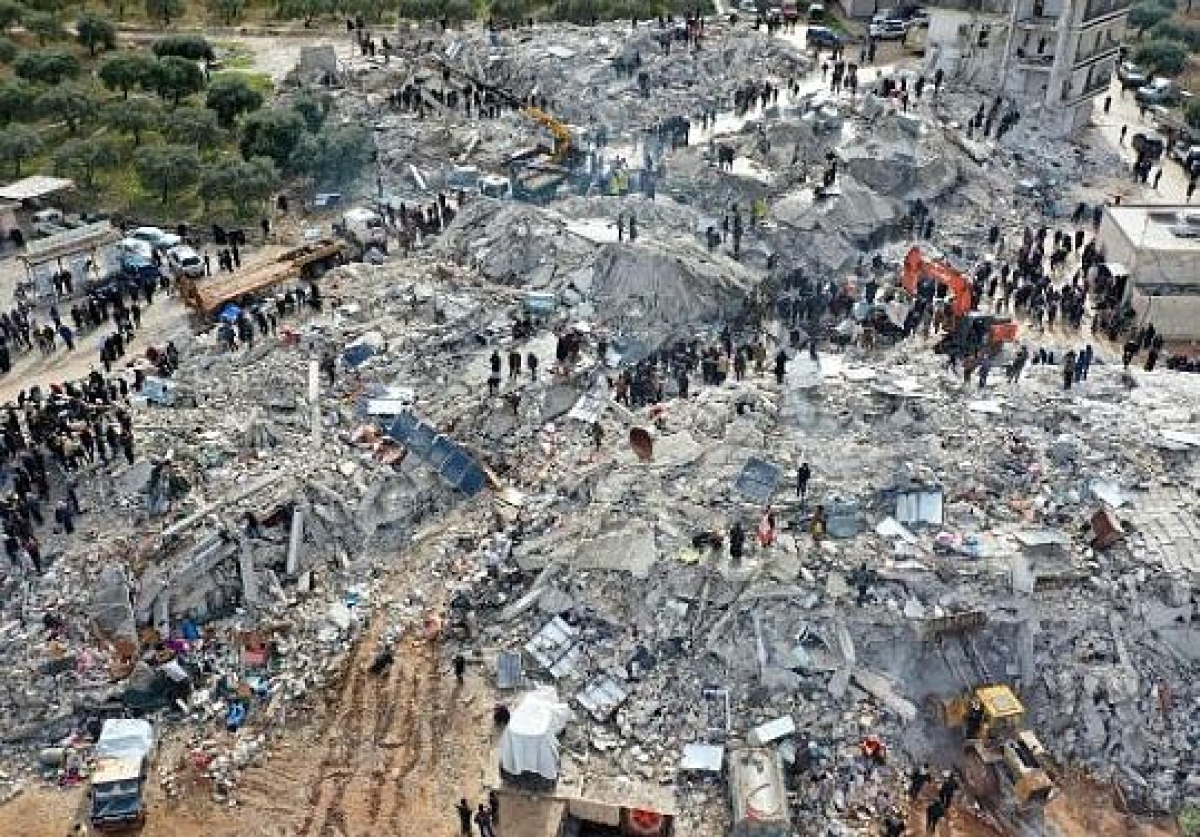Syrien: Es kann eigentlich nicht noch schlimmer werden

Dronenaufnahme aus Idlib, Bildquelle: Screenshot Youtube
Über die Lage in Syrien nach dem Erdbeben ließe sich viel schreiben. Aber eigentlich ist in diesem Beitrag alles gesagt, was zu sagen ist, weshalb ich einen längeren Ausschnitt hier teile, jeder/m allerdings an Herz lege, den ganzen Artikel zu lesen:
In 2011 Syrians rose in revolution against the Assad regime, and would have liked then to be recognized for their revolution’s successes. For years they resisted the most extreme oppression, and even under the bombs managed to build hundreds of democratic local councils. They also managed to avoid falling into sectarian civil war, despite the provocations. Sunni and Alawi villages didn’t attack each other. The sectarian massacres had to be organized from on high, first by the regime, then by ISIS, the regime’s dark protégé.
But the Assad regime was rescued by Russian and Iranian imperialists, and by the West’s appeasement of these imperialists. The democratic Syrian Revolution was defeated by force of arms. Worse, it was ‘orphaned’, to use Ziad Majed’s term. Beyond Syria it was ignored or misrepresented, particularly in the West, by the Kremlin’s leftist and rightist useful idiots and a wider public prepared to believe the worst of a mainly Arab and mainly Muslim people.
So now Syrians have become known internationally not for their history, nor their modern success, but for the extremity of their suffering. Their pains under dictatorship were bad enough, culminating in the 1982 Hama massacre when at least 20,000 were murdered, but multiplied after 2011 when the full force of local, regional and international counter-revolution was deployed against them.
From the start, pro-regime thugs smashed limbs and crushed skulls. ‘Assad or We Burn the Country’, they painted on the walls. Tens of thousands of unarmed young protestors were rounded up and then slowly tortured to death in the regime’s gulag. When this didn’t suppress people’s urge for freedom, the regime launched military assaults on civilian neighbourhoods, and organized a rape campaign against communities deemed disloyal. Throughout the summer of 2012, the regime organized a series of sectarian massacres, in Houla, Qubeir, Tremseh, and elsewhere, in which the throats of Sunni women and children were slit. This accompanied a steady military escalation, as the regime gradually worked out that the ‘international community’ would let it get away with any type of murder, from mortars and barrel bombs to grad and scud missiles. Then chlorine gas, then sarin gas, up to and beyond the atrocity of August 2013 when 1500 people were choked and convulsed to death in just a few hours in the Damascus suburbs. Next came the starvation sieges, often perpetrated by Iran-backed militias. By now the regime and its allies had understood that they couldn’t make the people kneel, so they decided to remove them instead. The scorched earth strategy meant the bombing of bakeries, schools and hospitals, the burning of crops and the shooting of livestock. Millions were driven from their homes.
‘It can’t get any worse’, Syrians used to say. And then it got worse, again and again, until the phrase became a sad joke. ISIS imposed its reign of terror over a third of the country. The international war against ISIS destroyed the jihadist state as well as the cities it had occupied, but left Assad – the first cause of ISIS in Syria – alone. Russia’s direct intervention added cluster bombs, thermite and bunker busters to the list of weaponry used against Syrian civilians. Russian aerial bombardment and Iranian-backed infantry recaptured liberated cities for Assad – most notably Aleppo.
Syria was divided into sections, each occupied by a different foreign power. The country became a battlefield for regional wars, between Turkey and the PKK, between Israel and Iran. By now more than half of the population was forcibly displaced. At home they lived in tented camps which flooded and froze in the winter. Abroad they drowned on boats crossing the Mediterranean, or suffocated in the backs of trucks, and became the target of racist rabble-rousers from Turkey to the United States.
The situation kept on getting worse. Even as the regime earned billions from the illegal production and export of Captagon and other narcotics, the economy in regime-held areas collapsed so dramatically that hospitals and schools were closed for lack of electricity. Over 90% of Syrians now hunger below the poverty line. Diseases such as covid and cholera ravage this weakened population.
Could it get any worse? Yes, it could. This winter a blizzard hit the north where millions of Syrians had been displaced. The people in tents froze in the snow and mud. And then came the earthquake, which made those in tents seem like the lucky ones.